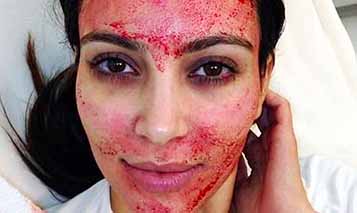
You’re a gay or bisexual man (or a biological woman) with an active sex life. You meet a man at a club one night and you both decide to have sex in the club parking lot.
About 3 weeks later, you experience flu-like symptoms. You feel feverish, your throat is sore and you have difficulty swallowing. You also feel aches and pains in your joints and you experience night sweats that drench your bed linen.
Your symptoms may include:
PRE-EXPOSURE
For the past 2 weeks, the HIV virus that you contracted from your parking lot tryst has attacked your white blood cels (T helper cells) and used your t-cells to make multiple copies of itself.
This process destroys your T-cells and releases antibodies and other substances into your blood that makes you feel ill.
The antibodies are specific to your HIV virus and will come in handy later when you are tested for the HIV virus.
But for now, you assume have the flu and you dismiss it. Eventually your appetite returns and the aches and pains and fever are gone.
POST-EXPOSURE
About 10 months later, you feel worse than you’ve ever felt in your life. You have a productive cough and you feel feverish and very weak.
Your new boyfriend tells you he feels heat radiating off your body.
He takes your temperature and you have a high-grade fever of 103.8.
You tell him you had night sweats for about 4 weeks and now you have shaking chills.
You alternate between feeling hot and feeling like you just stepped inside a walk-in freezer.
Your boyfriend tells you he’s taking you to the emergency room. But just the task of putting on your clothes exhausts you. You can barely walk to the car without his assistance.
DIAGNOSIS
At the emergency room, the doctor takes your medical history and runs a battery of diagnostic tests.
He returns with the bad news: you’re not only infected with the HIV virus but you also have full-blown acquired immune deficiency syndrome (AIDS).
You are diagnosed with an AIDS-related illness; a rare upper respiratory infection called Pneumocystis Pneumonia (PCP).
The doctor has even worse news. You have a super strain of HIV virus that is resistant to all antiretroviral drugs.
If you survive this bout of pneumonia the next infection could kill you.
The brief flu-like illness that you experienced after the parking lot tryst 10 months before was called HIV seroconversion illness. It was the moment when you converted from HIV negative to HIV positive.
If you had gone to the emergency room 10 months ago, an HIV antibody test would be positive and you would have started on antiretroviral drugs that would keep the virus from replicating.
Now it’s too late.
HIV TRANSMISSION RATES
Anal sex (male-to-male or male-to-female) remains the #1 mode of HIV transmission.
Male-to-female HIV transmission is 1 case in every 2,500 exposures. Male-to-female anal HIV transmission is higher. Vaginal HIV transmission ranks 3rd behind Caucasian male-to-male and black male-to-male. Males can not contract HIV from a female via anal sex unless the female has a functioning penis.
The risk of HIV exposure via anal sex is 1 case per 161 exposures for uncircumcised men and 1 case per 909 exposures per circumcised men.
The risk of HIV transmission from female-to-male remains very low; about .04% or 4 cases out of every 100,000 exposures.
This statistic is important because there are certain groups who spread misinformation about female-to-male transmission to fit their own hidden agendas.
The reason for the low incidence of female-to-male transmission is because the HIV virus needs access into the bloodstream.
That means his skin must be compromised in some way. Having a sore on his penis, a urinary tract infection, or an STD puts a man at higher risk of contracting HIV from a female.
Intact skin provides a physical barrier between you and the HIV virus. The virus can be on your skin and not infect you as long as your skin is intact.
Males and females can drastically reduce your risk of HIV exposure by avoiding anal sex even with a condom, since condoms can have microscopic tears in them.
Intravenous drug use (injecting drugs) puts you at higher risk of HIV exposure if you share dirty needles with HIV infected individuals.
Using clean needles that you purchased from a drug store or medical supplier does not put you at risk of HIV exposure.
This has been your Medical Minute
More Info On the Web
What is Seroconversion? – Healthline.com
HIV & AIDS Symptoms and Signs – WebMD
Definition of Seroconversion – Medicinenet.com
Recognizing Acute HIV Syndrome – About Health
DISCLAIMER
Any medical information published on this blog is for your general information only and is not intended as a substitute for informed medical advice. You should not take any action before consulting with your personal physician or a health care provider. Sandrarose.com and its affiliates cannot be held liable for any damages incurred by following information found on this blog.
This post was updated.





